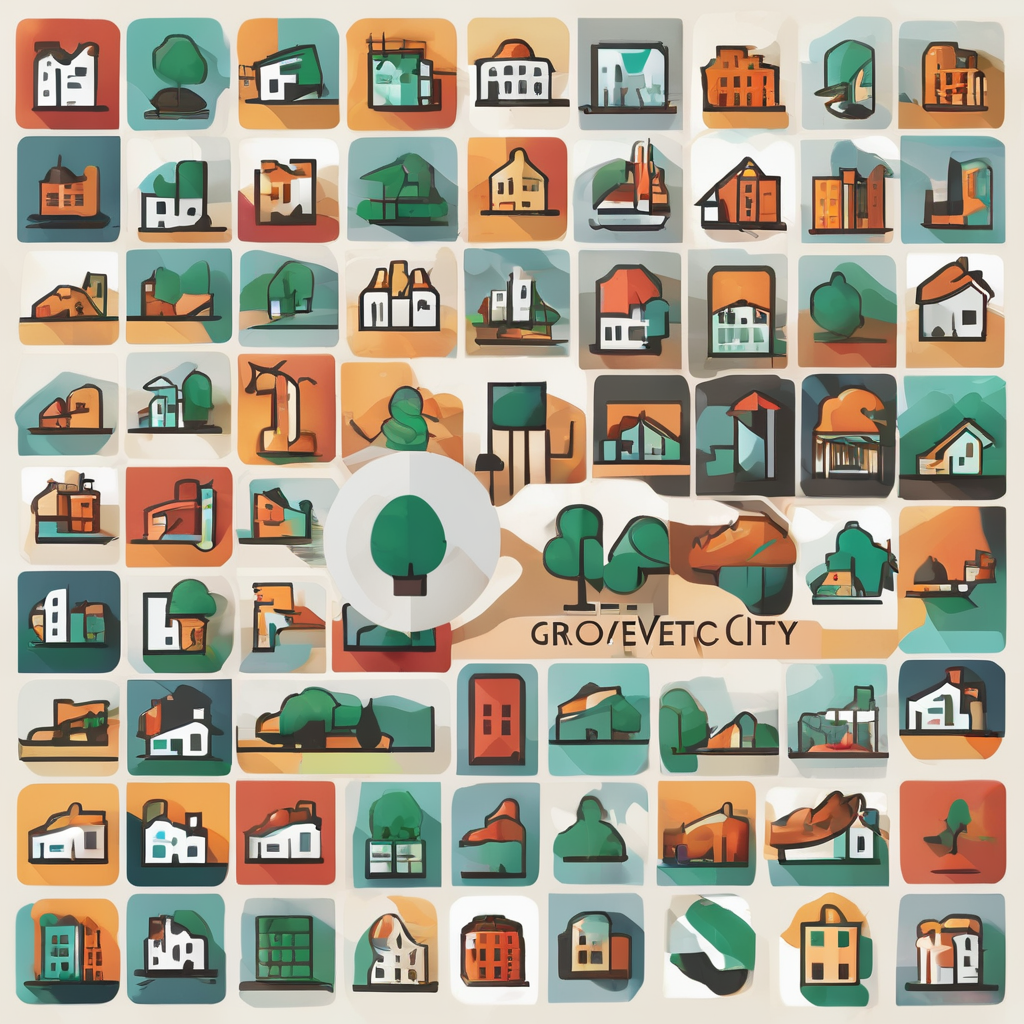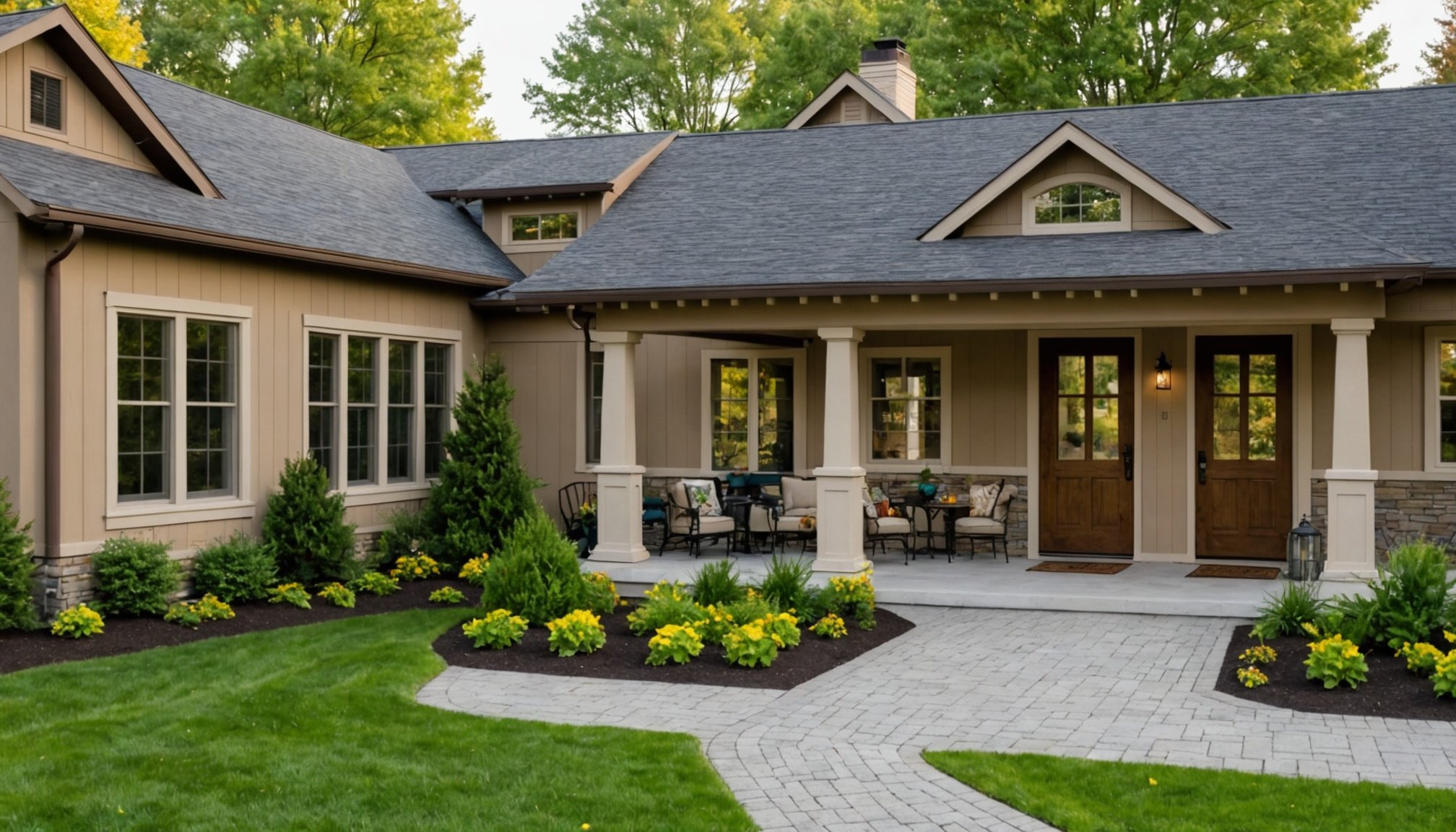Transforming Homes: Key Approaches to Incorporating Aging-in-Place Design in Residential Real Estate Developments
As the global population ages, the need for homes that support aging in place has become a critical focus in residential real estate. Aging in place, the desire to remain in one’s home as one ages, is not just a preference but a necessity for many older adults. Here, we delve into the key approaches, design principles, and practical considerations for incorporating aging-in-place design into residential developments.
Understanding the Need for Aging-in-Place Design
The desire to age in place is universal. A significant majority of adults aged 50 and older, approximately 75%, wish to remain in their current homes as they age, according to AARP’s 2024 Home and Community Preferences Survey[1].
Also read : Designing walkable communities: a comprehensive guide to creating people-friendly mixed-use spaces
“Aging in place isn’t just a preference—it’s essential for the wellbeing of older adults,” said Rodney Harrell, PhD, AARP Vice President of Family, Home, and Community. This sentiment is echoed by the fact that only about 4% of the housing stock in the United States is accessible for older adults, highlighting a significant gap between current housing and the needs of an aging population[5].
Universal Design: The Foundation of Aging-in-Place Homes
Universal design is a core principle in creating homes that are accessible and usable by people of all ages and abilities. This design approach ensures that homes are built or modified to be safe, comfortable, and functional for everyone.
Also to discover : Transform your high-rise living: effective tips for enhancing indoor air quality in apartments
Brian Harvey, owner of Harvey Home Modifications, explains, “Universal Design essentially is a design that will serve anyone of any physical capability in the house.” This includes features such as wide doorways, single-floor living, and accessible bathrooms and kitchens[4].
Key Features of Universal Design
- Wide Doorways and Hallways: Ensuring that doorways and hallways are at least 36 inches wide to accommodate wheelchairs and walkers.
- Single-Floor Living: Having all essential living areas, including the bedroom, bathroom, and kitchen, on the ground floor to avoid the need for stairs.
- Accessible Bathrooms: Installing raised toilets, grab bars, shower benches, and hand-held spray nozzles to facilitate safe and independent use.
- Adaptable Kitchens: Lowering countertops, using glass-front cabinet doors, and replacing knobs with handles to improve accessibility and visibility[4][5].
Home Modifications for Aging in Place
Home modifications are crucial for enabling older adults to live safely and independently in their homes. These modifications can range from minor adjustments to major renovations.
Minor Home Modifications
- Grab Bars: Installing grab bars in strategic locations such as bathrooms and hallways.
- Handrails: Adding handrails to stairs and ramps.
- Non-Skid Strips: Applying non-skid strips on steps and in shower areas.
- Raised Toilet Seats: Installing raised toilet seats and shower seats.
- Assistive Devices: Using jar openers, reachers, and other assistive devices to aid in daily tasks[2].
Major Home Modifications
- Adjusting Countertop and Cabinet Height: Lowering countertops and adjusting cabinet heights to make them more accessible.
- Elevator/Stair Lift: Installing elevators or stair lifts to facilitate movement between floors.
- Ramps: Building ramps for easy access to the home.
- Roll-In Showers: Creating roll-in showers with benches and hand-held showerheads.
- Widening Doorways/Hallways: Expanding doorways and hallways to accommodate mobility devices[2].
Technology and Safety Features
Technology plays a vital role in enhancing the safety and independence of older adults. However, there are significant barriers to overcome, particularly in rural areas where broadband access is limited.
Essential Technology Features
- Medical Alert Systems: Installing medical alert systems that can summon help in case of emergencies.
- Smart Security Features: Implementing smart security features such as motion detectors and video doorbells to enhance safety.
- Broadband Access: Ensuring reliable and affordable broadband access to support the use of digital health tools and communication services[1].
Community Readiness and Urban Planning
Aging in place is not just about individual home modifications but also about the broader community environment. Communities need to be equipped to support the needs of older adults.
Key Community Features
- Health Care Access: Ensuring easy access to health care services, including medical facilities and home health care.
- Reliable Utilities: Providing reliable utilities such as electricity, water, and heating.
- Safe Environments: Creating safe environments with well-maintained roads, sidewalks, and public spaces.
- Social Interaction: Encouraging social interaction through community centers, parks, and other public spaces[1].
Policy Solutions and Funding
To support the growing need for aging-in-place housing, there is a need for robust policy solutions and funding mechanisms.
Policy Initiatives
- Affordable Housing Programs: Expanding programs like the Housing Choice Voucher Program (Section 8) and supporting legislation such as the Affordable Housing Credit Improvement Act (AHCIA) to increase affordable housing options.
- Innovative Housing Solutions: Removing barriers to developing Accessory Dwelling Units (ADUs) and supporting inclusive zoning reforms to create diverse housing options[1].
Funding Sources
- Older Americans Act (OAA): Utilizing OAA funds to support home modifications and in-home services through Title III B and Title III E.
- Home Modification Grants: Securing grants from organizations like the U.S. Department of Housing and Urban Development to help older adults with limited incomes[2].
Wellness Communities and Real Estate Trends
The real estate sector is evolving to incorporate wellness and longevity-focused design, which aligns perfectly with the needs of an aging population.
Wellness as Infrastructure
Wellness is no longer seen as an amenity but as essential infrastructure in new developments. This includes designing healthier built environments, prioritizing mental and physical health, and creating accessible green spaces. Such designs can improve public health, community longevity, and property values[3].
Longevity Economy
The focus on longevity involves developing properties that facilitate longer, healthier lives. This includes integrating personalized health plans, advanced diagnostic testing, and treatments. These communities are designed to encourage physical activity, social interaction, and overall well-being among aging populations[3].
Role of Certified Aging-in-Place Specialists
Certified Aging-in-Place Specialists (CAPS) play a crucial role in helping older adults and their families navigate the process of making their homes safe and accessible.
Responsibilities of a CAPS
- Assessing Home Accessibility: Evaluating the home to determine necessary modifications.
- Obtaining Quotes and Budgeting: Working with the family’s budget to navigate the cost of modifications.
- Hiring Contractors: Selecting and hiring reputable contractors to perform the necessary work[5].
Practical Advice for Homeowners
For homeowners looking to age in place, here are some practical steps to consider:
Assess Your Home
- Hire a CAPS to assess your home’s accessibility and identify necessary modifications.
- Consider the five key areas: kitchen, bathroom, entryways, hallways, and flooring[5].
Plan Ahead
- Start making modifications early, even if you don’t currently need them.
- Ensure that your home is primarily on a single floor and has an open floor plan[4].
Seek Funding
- Explore funding options such as home modification grants and OAA funds.
- Consult with local Area Agencies on Aging (AAAs) for available resources[2].
Aging in place is a complex issue that requires a multifaceted approach. By incorporating universal design principles, making necessary home modifications, ensuring community readiness, and leveraging policy solutions and funding, we can create environments that support the health, safety, and independence of older adults.
As we move forward, it is crucial to prioritize affordable, safe, and accessible housing and communities. By doing so, we can ensure that older adults can live their lives with dignity and comfort in the homes they love.
Table: Comparison of Home Modification Costs
| Modification Type | Average Cost Range | Description |
|---|---|---|
| Minor Modifications | $100 – $1,000 | Grab bars, handrails, non-skid strips, raised toilet seats |
| Major Modifications | $7,000 – $41,000 | Elevators, stair lifts, ramps, roll-in showers, widening doorways/hallways |
| Kitchen Upgrades | $700 – $8,000 | Lowering countertops, glass-front cabinet doors, replacing knobs with handles |
| Bathroom Upgrades | $700 – $8,000 | Raised toilets, grab bars, shower benches, hand-held showerheads |
| Home Repairs | $500 – $5,000 | Appliances, flooring/carpeting, electrical/wiring, heating/cooling, plumbing |
Detailed Bullet Point List: Most Requested Aging-in-Place Home Renovations
-
Bedroom:
-
Move the bedroom to the ground floor.
-
Ensure the bed is at a comfortable height for easy access.
-
Consider installing a walk-in closet with easy-to-use storage.
-
Bathroom:
-
Install raised toilets and grab bars.
-
Replace towel racks with grab bars.
-
Place shower controls near the entry point to avoid leaning through water.
-
Install a shower bench and a hand-held spray nozzle.
-
Entryways and Hallways:
-
Ensure doorways and hallways are at least 36 inches wide.
-
Install permanent ramps or angled entry plates.
-
Secure loose floor items like rugs and cords.
-
Kitchen:
-
Lower countertops to a comfortable height.
-
Use glass-front cabinet doors for improved visibility.
-
Replace knobs with handles for easier use.
-
Flooring:
-
Use flooring materials that are attached to the floor to prevent sliding and tripping.
-
Avoid area rugs that can cause trips and falls.
-
Ensure tile and carpeted areas do not create stumbling hazards where they meet[4][5].
By understanding and implementing these strategies, we can create homes and communities that truly support the needs of older adults, enabling them to live safely, independently, and with dignity.




